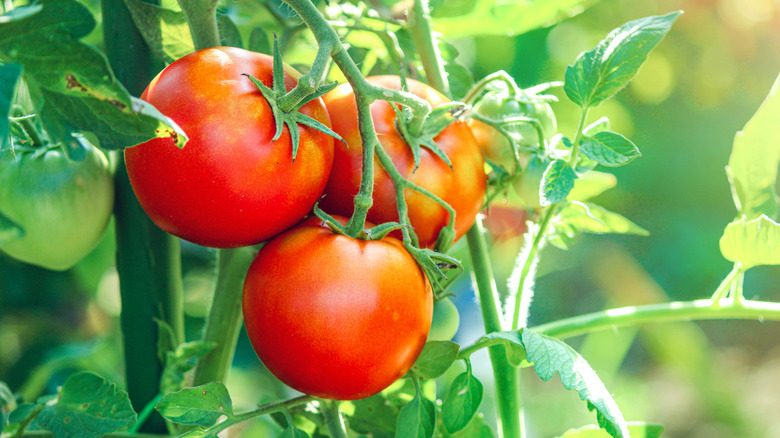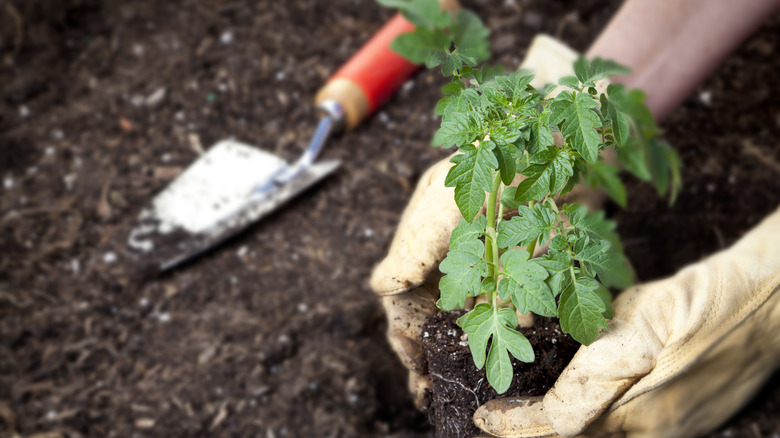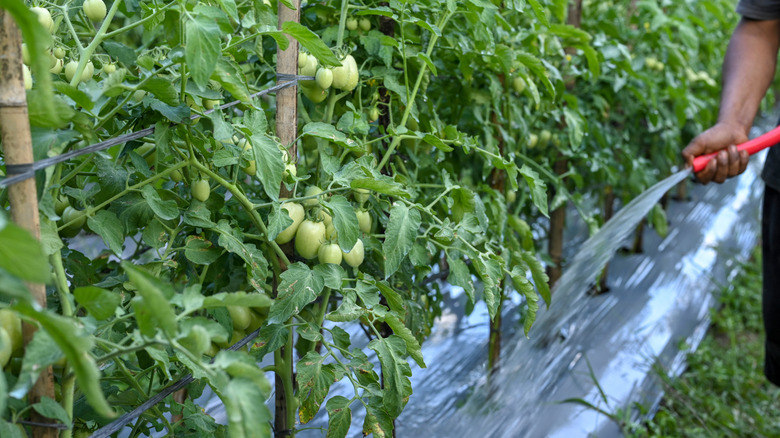The Worst Places To Plant Tomatoes In Your Garden If You Want A Bountiful Harvest
There's no doubt that tomatoes are the absolute stars of any summer vegetable garden. The taste of a ripe tomato plucked from a thriving vine has a taste that's simply unmatched by anything you can purchase in a store. But if you want a bountiful harvest of delectable fruits, you're going to have to find the best spot in your vegetable garden to plant tomatoes and avoid all of the worst places you can grow them. To elaborate, it's never a good idea to plant tomatoes in the shade, in the wrong type of soil, or in areas where they won't have enough space to grow. Plus, you don't want to plant them too far away from a reliable water source because these plants need ample moisture for optimum growth and excellent fruits.
One of the absolute worst places to plant your tomatoes is in the shade. Tomato plants need sun and lots of it. Not only will this allow the vines to grow nice and lush, but it means that the fruits ripen beautifully on the vine, until you're ready to pick them. Sun-ripened tomatoes are just the best when it comes to full-bodied flavor. You also want to ensure that you plant your tomatoes in a spot where you haven't grown them in previous years. This is particularly important if you had issues with diseases and pests during past seasons. Fungal diseases, in particular, can overwinter in the soil and reinfect this year's crop.
Don't plant tomatoes in poor soil
Another place you want to avoid planting your tomatoes is in poor soil that hasn't had any amendments made to it. Tomatoes need ample nutrients to grow well, so the soil you plant into really does matter. Ideally, you want to do a soil test for both the pH and the nutrient content. The perfect pH for growing healthy tomatoes is between 5.5 and 7. If your soil is too alkaline, you can amend it by adding aged compost, which you should do anyway, before you plant your tomatoes.
You can either do this in the fall or wait until late winter or very early spring. The added nutrients provided by the compost will give your plants a good head start, which means you might not need to add any additional fertilizer until later on in the season. Alternatively, you can add aged manure to the soil to improve its nutrient content, but try and do this in the previous fall so it has time to become activated by the microbes in the soil. Of course, for the healthiest plants, you'll want to familiarize yourself with how often to fertilize tomato plants depending on growth stages.
Give your plants space and position them near a water source
If you've had the pleasure of growing tomatoes in previous seasons, you'll know that they're not diminutive plants and demand a lot of space, especially if you're growing indeterminate types. For this reason, they're not the type of plants that you use to fill gaps in your veggie patch. They need room for their roots to spread and for their large leaves to grow unencumbered. Overcrowding might result in stunted plants and limited airflow around your tomatoes, which can cause problems with fungal diseases. Even if you plan to give your tomatoes a bed almost to themselves, you still want to space them around two to three feet apart. If you only have a small garden and this is going to be a problem, simply select determinate or patio tomato varieties instead.
As already mentioned, tomatoes are also thirsty plants and they'll need ample watering through summer. To prevent cracking and splitting tomatoes, it's best to water deeply but regularly rather than just a shallow sprinkle. This means you want your tomatoes growing where they can easily be reached with the hose or are within easy access to a tap that you can clip an automatic watering system to. If they're too far away from a water source, you're soon going to get very tired hauling full watering cans to your plants on a daily basis, which means your plants might suffer from insufficient moisture.


